Last week, we wrote about the events in Charlottesville, Virginia in terms of their historical and political context. Since then, the national and international response to right wing mobilization has been rapid and powerful. The response has been global, e.g. women in Poland held photos of slain Heather Heyer while they blocked a far right wing march. The national conversation is changing to include criticism of white supremacy and confederate statues are being taken down.
This week, we present a greater focus on the tasks of the movement for social justice and racial equality. It is possible to halt the rise of right wing extremism. To do that we must understand what institutions maintain white supremacy and turn our energy towards ending racist institutions in the United States and globally.
There are signs that the right wing violence in Charlottesville last weekend may mark a turning point in the United States. Until Charlottesville, right wing white supremacist nationalists had been escalating their mobilizations. The “Unite the Right Rally” in Charlottesville was the largest gathering of white supremacists in the United States in at least a decade. The Virginia Defender reports that “500 fascists gathered at Emancipation Park. Many came prepared for battle, with helmets, shields, body padding and visible weapons, including guns.” Events of the weekend showed that despite corporate media reports this was hardly a rally, it was two days of intentional violence directed towards blacks and anti-racists. And it failed.
Rather than being intimidating, the open right wing violence galvanized people to rise up against it. The day after the Unite the Right event, the lead organizer, Jason Kessler, attempted to hold a press conference. He was forced to stop and leave the area as hundreds of locals chanted “shame.” That night, more than 700 solidarity events were held with Charlottesville from coast to coast. Hundreds of people rallied outside the White House and marched against white supremacy in Washington, DC on Monday night.
Then, confederate statues, like the ones at the center of the protests in Charlottesville, began to come down.The first was in Durham, North Carolina where activists took it upon themselves to remove a statue dedicated to confederate soldiers. Baltimore activists planned to follow suit the next day with the announcement of a “Do It Like Durham” rally at the site of a statue of Robert E. Lee and Stonewall Jackson where they had erected a statue of ‘Madre Luz’ a few days before. However, the Lee/Jackson statue and three others were removed by the city government overnight. And by week’s end, the Maryland state government removed a statue of Roger Taney, the author of the Dred Scott decision which found slaves were property with no human rights, from the state house grounds. Other states are considering removal of their confederate monuments.
The underlying issue is not the confederate statues, but what they represent – glorification of those who actively upheld racist institutions that codified in law the treatment of human beings as property and the rise of white supremacists. As Lee Camp explains in his latest episode of Redacted Tonight, confederate symbols were largely abandoned after the Civil War and came back in opposition to the civil rights movement in the mid-twentieth century. The memorials were used to show opposition to ending Jim Crow and creating equal rights for African Americans.
On Wednesday night, thousands participated in a candlelight vigil on the grounds of the University of Virginia in Charlottesville to denounce hate. On Friday, the Durham County government closed offices and sent employees home over concern about a possible white supremacist march that afternoon. Instead of fleeing, hundreds of people showed up in downtown Durham to march against the white supremacists, and when none showed up, the marchers celebrated with dancing in the streets. The next day in Boston, Massachusetts, tens of thousands of people marched to surround a so-called “Free Speech” Rally, also organized by white supremacists, although they tried to portray themselves differently. Only about a dozen people attended the rally, and they ended early because of the presence of the counter protesters. Some of those planning to participate in the rally decided not to attend out of fear of large counter protests.
Henry Giroux writes in Truth Dig that the response to right wing terror this week was appropriate and essential:
“As the historian Timothy Snyder has observed, it is crucial to remember that the success of authoritarian regimes in Germany and other places succeeded, in part, because they were not stopped in the early stages of their development. The growing call for illiberal democracies (code for authoritarian regimes) first begins with the popularization and normalization of hate and bigotry, which we have witnessed under the Trump regime, and then morphs into right-wing groups developing their own militias, organs of violence and paramilitary forces.”
The movement for social justice and racial equality succeeded this week because it stood up to and diminished the power of white supremacists. This is a first critical but not sufficient step.
Next Steps to Fight White Supremacy
Giroux goes further and ties the rise of right wing ideology to Trump and the failure of democracy under neo-liberalism. Neo-liberalism undermines the basic social safety net required by societies and fuels wealth inequality, which creates insecurity and an opening for authoritarianism.
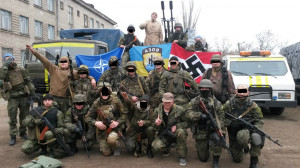 Ajamu Baraka reminds us that the rise of right wing authoritarianism has been going on for the past four decades in the United States. He explains that it was the Obama administration’s use of extreme right wing elements in the Ukraine to overthrow their government that gave greater legitimacy to the extreme right in the European Union and the US. Baraka urges us to understand the greater context of what is happening, that white supremacy has a global structure in institutions such as the International Monetary Fund, the World Trade Organization and others. He writes, “The structures of white power, that is the structures and institutions that provide the material base for Euro-American white supremacy and its ideological reproduction, should be the focus of radical opposition.”
Ajamu Baraka reminds us that the rise of right wing authoritarianism has been going on for the past four decades in the United States. He explains that it was the Obama administration’s use of extreme right wing elements in the Ukraine to overthrow their government that gave greater legitimacy to the extreme right in the European Union and the US. Baraka urges us to understand the greater context of what is happening, that white supremacy has a global structure in institutions such as the International Monetary Fund, the World Trade Organization and others. He writes, “The structures of white power, that is the structures and institutions that provide the material base for Euro-American white supremacy and its ideological reproduction, should be the focus of radical opposition.”
Can we identify structures that perpetuate white supremacy and systemic racism in our own communities? They surround us in the ongoing existence of economic discrimination, lack of equality in education, an unjust court system, mass incarceration and more. Peter Certo explains that “Most days, it’s a mundane system that pits the law against our non-white neighbors — and laws don’t need anyone to ‘feel’ racist for them to work. They can look perfectly colorblind on paper, but they’re not.”
We don’t have to look far to see them though. For example, the White House knew months ago that right wing extremism was on the rise in the United States and failed to stop it. Police in Charlottesville did not intervene to stop violence. In fact, they refuse to take action in the case of a young black man, DeAndre Harris, who was severely beaten on video tape by white supremacists. In our own communities, we will find that black communities are more likely to lack access to clean drinking water and that communities of color are more likely to be poisoned with environmental toxins. And internationally, we see that the United States is currently backing violent right wing elements in Venezuela and Syria (non white countries) to destabilize their governments.
A challenge for all of the people who mobilized against white supremacy this week is whether or not we can continue to build on this momentum not just to remove confederate statues, but to also eliminate the institutions that maintain white supremacy. For example, yesterday marches against prison slave labor were held from coast to coast, but only a few hundred people showed up at best. The marches were organized to build opposition to the 13th amendment because it allows prisoners to be legally treated as slaves. Learn more at the IAmWeUbuntu website.
Dismantling these institutions is a difficult task, and it takes longer than pulling down a statue, but if we do not engage in this work, then we are not actually fighting white supremacy.
Solidarity
This past week, there were also efforts to divide the anti-racist movement. Divide and conquer is a time-tested tactic for weakening movements. Perhaps you witnessed or experienced it too? For example, the commercial media (and the President) tried to blame Anti-Fascists for violence in Charlottesville when they were actually there to counter the open and extreme violence of white supremacists. People who identify specifically as AntiFa played a critical role in protecting counter protesters, such as a group of faith leaders being attacked by white supremacists, and in providing immediate medical support to injured counter protesters.
And the argument was being made that racism is itself a tool used to divide and conquer groups, such as workers, and that we should focus on class instead of race. Our response is that race was used successfully to divide workers and racism has become institutionalized in the United States. We cannot make these racist systems go away by ignoring them. We must identify them and work in solidarity to dismantle them. When we do, race may no longer be an issue. Until we do, it is an issue and one that is fundamental and that we can unite around. There are also systems in place that perpetuate class divisions, and we can work to dismantle those at the same time.
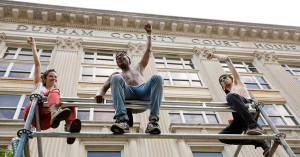 Lastly, though this work is a struggle, we can also bring joy into it. Janey Stephenson describes a recent anti-fascist rally in London that involved dancing and how dance is used in protests. There was dancing in Durham on Friday in celebration that no white supremacists showed up. Barbara Ehrenreich writes, in Dancing in the Streets, that “Physical movement — a powerful escalation of typical protest chanting — not only releases emotion, it also creates bonding, trust and equality, dissolving hierarchy and increasing a sense of community.” We celebrate the successes this week in marginalizing white supremacists.
Lastly, though this work is a struggle, we can also bring joy into it. Janey Stephenson describes a recent anti-fascist rally in London that involved dancing and how dance is used in protests. There was dancing in Durham on Friday in celebration that no white supremacists showed up. Barbara Ehrenreich writes, in Dancing in the Streets, that “Physical movement — a powerful escalation of typical protest chanting — not only releases emotion, it also creates bonding, trust and equality, dissolving hierarchy and increasing a sense of community.” We celebrate the successes this week in marginalizing white supremacists.
We will remain vigilant to prevent their rise. And we commit to working to tear down systems of oppression and build a new world that works for all of us.
Source Article from https://popularresistance.org/newsletter-success-against-racists/
 RSS Feed
RSS Feed















 August 21st, 2017
August 21st, 2017  Awake Goy
Awake Goy 
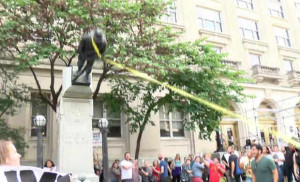
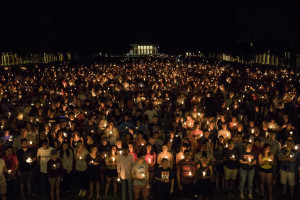
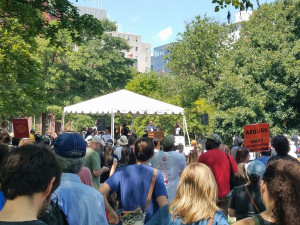
 Posted in
Posted in  Tags:
Tags: 













